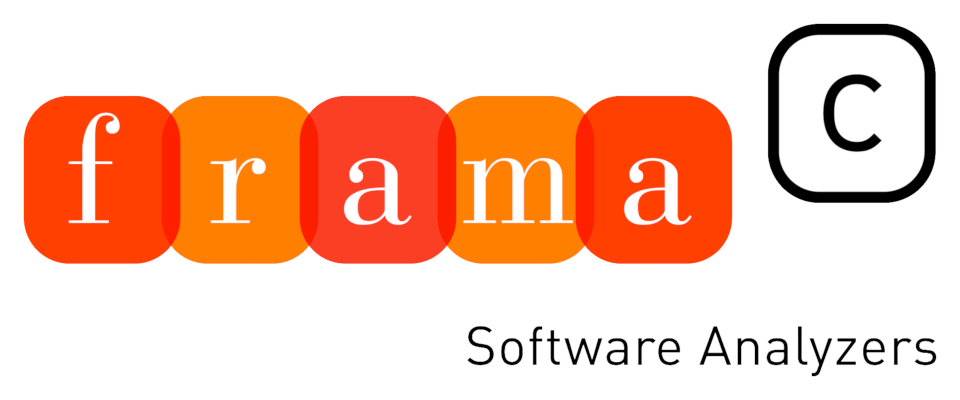Frama-C API - Monad
This module provides generic signatures for monads along with tools to build them based on minimal definitions. Those tools are provided for advanced users that would like to define their own monads. Any user that only wants to use the monads provided by the kernel can completely ignore them.
module type S = sig ... endmodule type S_with_product = sig ... endBuilding monads from minimal signatures
Below are functors for creating monads (with or without product). Both gives a strictly equivalent implementation but differ from the primitives given as argument. For an example of monad implementation based on this module, see Option.
module type Based_on_bind = sig ... endmodule type Based_on_bind_with_product = sig ... endmodule type Based_on_map = sig ... endmodule type Based_on_map_with_product = sig ... endFunctors extending minimal signatures
Those functors provide a way to extend a minimal signature into a full monad that satisfies the signatures defined above. This is possible because one can define operations from one monadic definition using the operations required by the others. Indeed :
1. ∀m:('a t), ∀f:('a -> 'b), map f m ≣ bind (fun x -> return (f x)) m
2. ∀m:('a t t), flatten m ≣ bind identity m
3. ∀m:('a t), ∀f:('a -> 'b t), bind f m ≣ flatten (map f m)
All required laws expressed in both minimal signatures are respected using those definitions.
module Make_based_on_bind (M : Based_on_bind) : S with type 'a t = 'a M.tExtend a minimal monad based on bind.
module Make_based_on_map (M : Based_on_map) : S with type 'a t = 'a M.tExtend a minimal monad based on map.
module Make_based_on_bind_with_product (M : Based_on_bind_with_product) : S_with_product with type 'a t = 'a M.tExtend a minimal monad based on bind with product.
module Make_based_on_map_with_product (M : Based_on_map_with_product) : S_with_product with type 'a t = 'a M.tExtend a minimal monad based on map with product.
Detailed explanations and category theory
To be pedantic, the map based approach defines a monad as a categoric functor equipped with two natural transformations. This does sound frightening but this breaks down to rather simple concepts.
Let's start at the beginning. A category is just a collection of objects and arrows (or morphisms) between those objects that satisfies two properties: there exists a morphism from all objects to themselves, i.e an identity, and if there is a morphism between objects a and b and a morphism between objects b and c, then there must be a morphism between a and c, i.e morphisms are associative.
There is a strong parallel between categories and type systems. Indeed, if one uses the collection of all types as objects, then for all types 'a and 'b, the function f : 'a -> 'b can be seen as a morphism between the objects 'a and 'b. As functions are naturally associative and, for any type 'a, one can trivially defines the identity function 'a -> 'a, one can conclude that types along with all functions of arity one forms a category.
Next, there is the idea of functors. In the category theory, a functor is a mapping between categories. That means that, given two categories A and B, a functor maps all objects of A to an object of B and maps any morphism of A into a morphism of B. But, not all mappings are functors. Indeed, to be a valid functor, one has to preserve the identity morphisms and the composition of morphims.
The idea of functors can also be seen in a type systems. At least, the more restricted but enough here of an endofunctor, a functor from a category to itself. Indeed, for any type v and for any parametric type 'a t, the type v t can be seen as a mapping from values of type v to values of type v t. Thus the type 'a t encodes the first part of what a functor is, a mapping from objects of the Type category to objects of the Type category. For the second part, we need a way to transform morphisms of the Type category, i.e functions of type 'a -> 'b, in a way that preserves categoric properties. Expressed as a type, this transformation can be seen as a higher-order function map with the type map : ('a -> 'b) -> ('a t -> 'b t).
Finally, this definition of a monad requires two natural transformations. Simply put, a natural transformation is a mapping between functors that preserves the structures of all the underlying categories (mathematicians and naming conventions...). That may be quite complicated to grasp, but in this case, the two required transformations are quite simple and intuitive.
The first one is the return function that embeds values into the monad, which can be seen as a natural transformation from the identity functor to the monad functor. The second one is the flatten function, which is a transformation from two applications of the monad functor to the monad functor. With this two transformations, any number of application of the monad functor can be taken down to a unique application of the monad.
